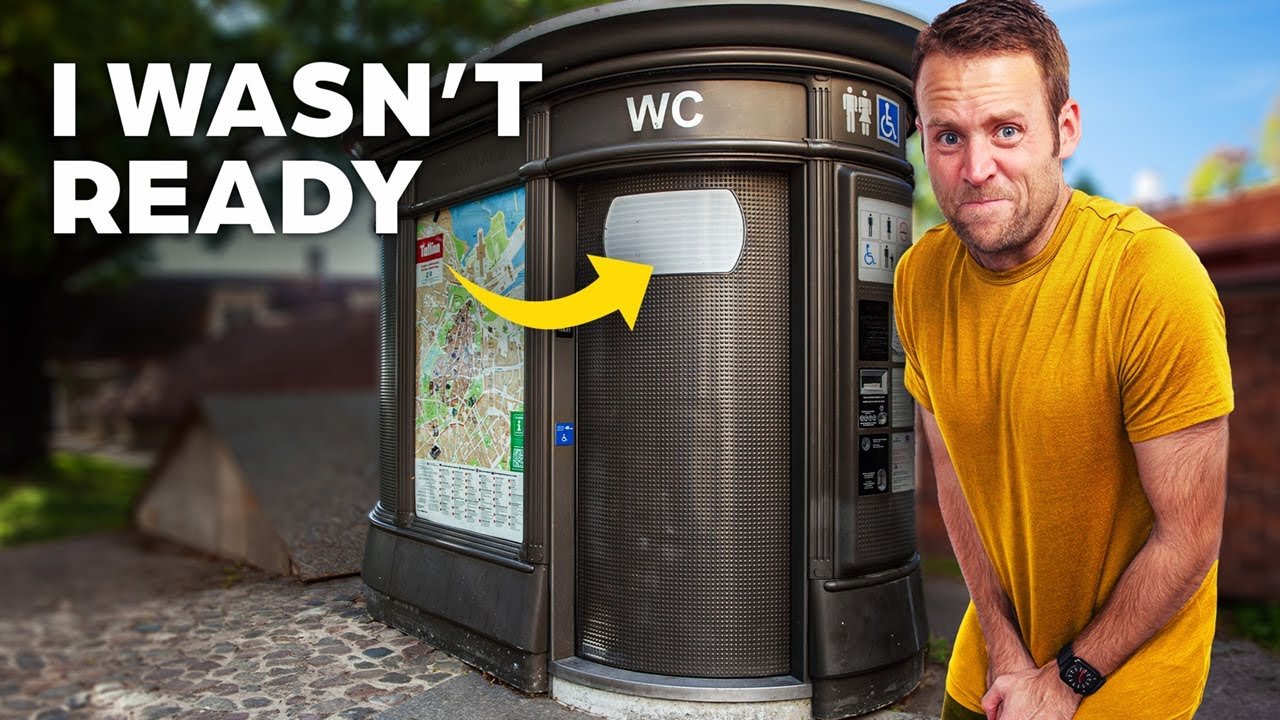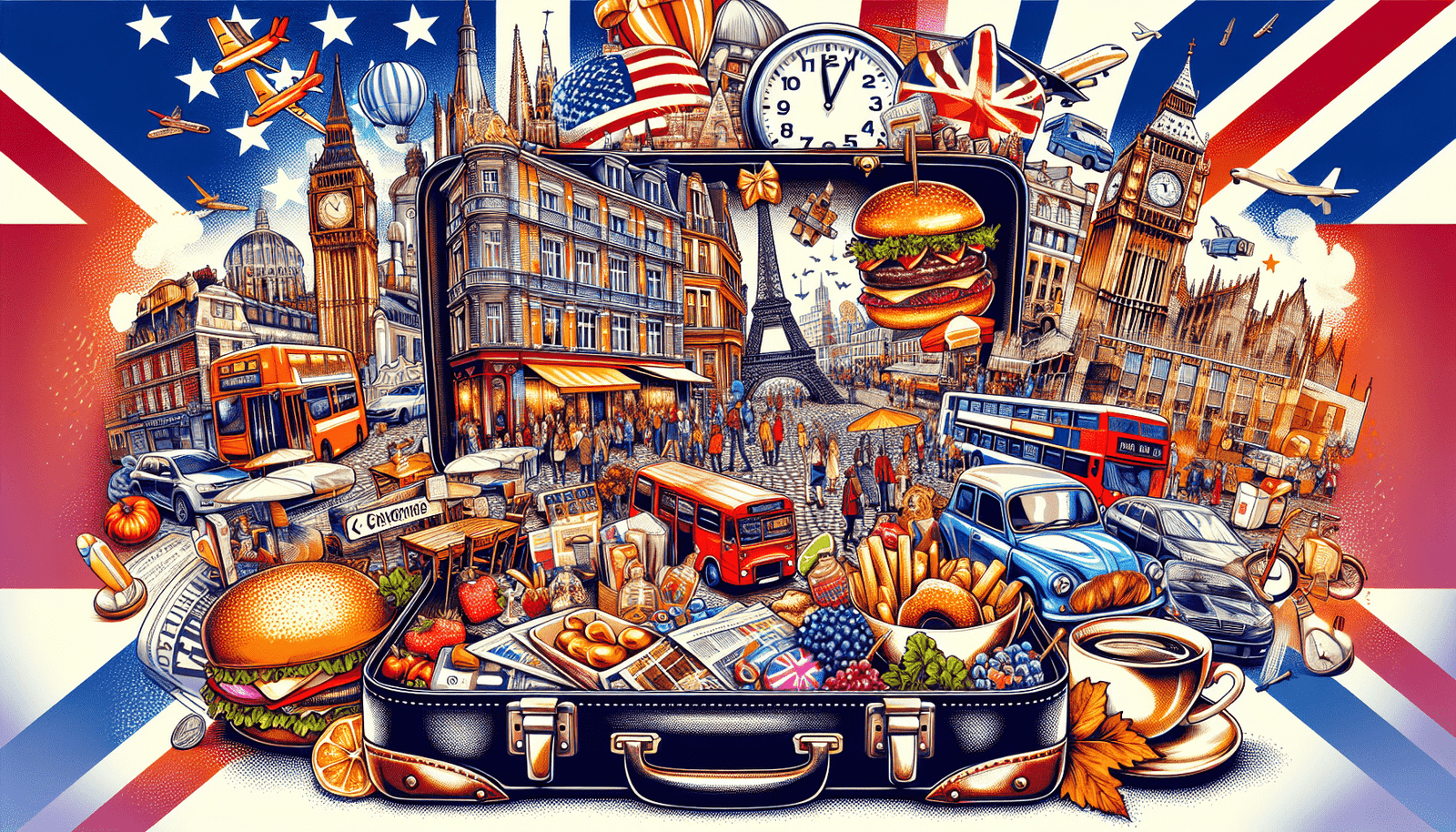Your journey through Europe promises breathtaking sights and rich culture, but don’t be caught off guard by the unexpected. In “10 SHOCKING Cultural Differences for Americans in Europe,” Nik and Allie from Away Together share intriguing quirks you may encounter on your travels. From the need to pay for public restrooms to stumbling upon public nudity, these surprises can be as eye-opening as they are entertaining. This video is part of a series designed to enhance your travel experience with insightful tips and valuable advice.
You’ll discover how European customs can differ significantly from what you’re used to in the U.S. Picture yourself navigating without traditional street signs or adjusting to the European floor numbering system. From managing without air conditioning to relying on Europe’s impressive public transport networks, this guide is here to help you prepare. Whether you’re grabbing a bite without expecting free water or expecting closed stores on Sundays, Nik and Allie have got your back with these insightful observations. Enjoy their friendly guidance and get ready to embrace these new experiences with an open mind.

This image is property of i.ytimg.com.
Public Restroom Payments
Many restrooms in Europe require a fee for access.
As you travel through Europe, one of the first things you might notice is that public restrooms often require a small fee for access. Unlike in the United States, where most public facilities are free to use, many European countries maintain their restrooms with the help of these small charges. So, it’s a good idea to keep some coins handy, especially when you’re out and about in bustling areas like train stations or city centers. The fee usually isn’t much—often around 50 cents to a euro—but it can catch you by surprise if you’re not prepared. Don’t be surprised to encounter a restroom attendant either, as they are quite common and part of the service offering.
Differences in toilet design can be surprising, including features like the ‘pooh shelf’ in Germany.
Another aspect of European restrooms that might surprise you is the variation in toilet design. For instance, German toilets are known for the so-called ‘pooh shelf.’ This design is unique and may be startling at first. Instead of dropping directly into the water, waste is deposited on a ledge before being flushed away. This design was originally intended to reduce splashing and to allow for inspection—an unexpected feature for many American travelers. Additionally, many European toilets feature a dual-flush system, offering two buttons for different levels of water conservation. These quirks highlight the innovation and distinctiveness in European restroom design.
Street Name Placement
Street names are often located on the sides of buildings, unlike the freestanding signs common in the U.S.
When you’re navigating the streets of a European city for the first time, finding street names might be a bit tricky. Rather than the freestanding street signs common in the U.S., many European cities display street names on the sides of buildings. This means you might have to look up at the corner of a building to spot the name. While this method has its charm and contributes to the aesthetic of the cityscape, it can also be a bit confusing until you get used to it. Once you’re familiar with this system, many travelers find it an intriguing and quaint aspect of European urban design. Nevertheless, it’s definitely a little adventure for your sense of direction!
Building Floor Numbering
Europe counts the ground floor as the first floor, unlike the U.S. where the first floor is one above ground level.
If you’re staying in multi-story accommodations in Europe, you might find yourself momentarily confused by the floor numbering system. In most European countries, the floor at street level is referred to as the “ground floor,” and the one above it is the “first floor.” This is a departure from the American system, where the ground floor is the first floor. Not knowing this can lead you to wander halls in search of your room. It’s a small difference that can cause you to inadvertently visit another floor if you’re not aware. The key here is to double-check floor numbers and to enjoy the cultural diversity that makes travel so rewarding.
Absence of Elevators
Older buildings may lack elevators even if multi-story.
In Europe, especially in historic cities, many buildings have stood the test of time and showcase beautiful architecture. However, the charm of history often comes with the quirks of the past, including the absence of elevators. If you’re staying in a quaint little guest house or visiting a museum housed in a centuries-old building, prepare for some stair climbing. This is part of the experience in many historic areas, where preservation often takes precedence over modern convenience. Packing light can certainly be an advantage, saving you from hauling heavy luggage up several flights of stairs.

Air Conditioning Expectations
Air conditioning is not as prevalent, particularly in northern Europe.
If you’re traveling to Europe during the warmer months, don’t be surprised if you find yourself without the constant hum of air conditioning. In northern Europe especially, air conditioning is not as pervasive as it is in the U.S. Many establishments rely on the climatic comfort of cool evening air, utilizing open windows and electric fans to cool their interiors. This practice is environmentally friendly and adds to the charm of European life. It’s a great opportunity to embrace the unique climate and relax with the flow of fresh air.
Public Transportation Efficiency
Europe offers extensive and efficient rail networks.
One of the highlights of European travel is undoubtedly the seamless experience of public transportation. European cities are famed for their extensive, efficient rail networks and public transit systems. Unlike in the U.S., where cars dominate transportation, many Europeans opt for trains, trams, and buses as their primary means of getting around. High-speed trains connect major cities, offering breathtaking views along the way and adding a touch of adventure to your travels. Be sure to familiarize yourself with ticket validation procedures to avoid fines. Using public transport means less stress and more time to savor your journey, making it a top choice for exploring Europe’s vibrant cities and stunning landscapes.

Sunday and Monday Closures
Many stores and restaurants may close on Sundays in Europe.
In Europe, Sundays are often considered a day of rest, with many stores and restaurants remaining closed. This is especially true in countries with strong religious traditions. You might find city streets quieter than usual, with locals spending time with family or enjoying leisurely activities. It’s wise to plan your shopping and dining experiences around these closures. Additionally, some attractions may also be closed on Mondays, so you might need to plan your visits accordingly to ensure you don’t miss out on must-see landmarks.
Ordering Water at Restaurants
Water typically isn’t free, and ice is less common.
Dining out in Europe presents its own little surprises. Ordering water at a restaurant usually entails a charge, as complimentary water is not standard practice. European restaurants often serve bottled mineral water—either still (non-carbonated) or sparkling—rather than offering free tap water. If you’re looking to economize, you can request tap water, though not every establishment will provide it. Also, ice is a rarity in Europe, so expect your drinks to be served chilled, but not ice-cold. These dining experiences encourage you to sit back, relax, and enjoy the culinary culture around you.
Prevalence of Smoking
Smoking is more socially acceptable and widespread in public spaces.
While smoking regulations have become stricter over the years in Europe, smoking is still more common and socially acceptable in public spaces than in many parts of the U.S. You might notice people enjoying a cigarette at outdoor cafés, parks, and other public areas. Although smoke-free zones exist and are strictly enforced in indoor settings, outdoor smoking remains prevalent. If you’re sensitive to smoke, be mindful of smoking areas, especially when choosing where to sit in outdoor restaurants or cafes.
Conclusion
These cultural differences highlight the unique experiences awaiting American travelers in Europe.
Traveling to Europe offers a rich tapestry of experiences steeped in history and culture. The differences you’ll encounter—from restroom customs to transportation norms—are all part of what makes visiting Europe so captivating and memorable. By understanding and adapting to these cultural distinctions, you’ll enhance your travel experience, making your journey not only an adventure but also a cultural immersion. Embrace these quirks, and you’ll find that they add character to your travels, providing stories and memories to cherish long after returning home.
Some of the links on this site are affiliate links, which means I may earn a small commission if you click on them and make a purchase, at no additional cost to you. As an Amazon Associate, I earn from qualifying purchases.

